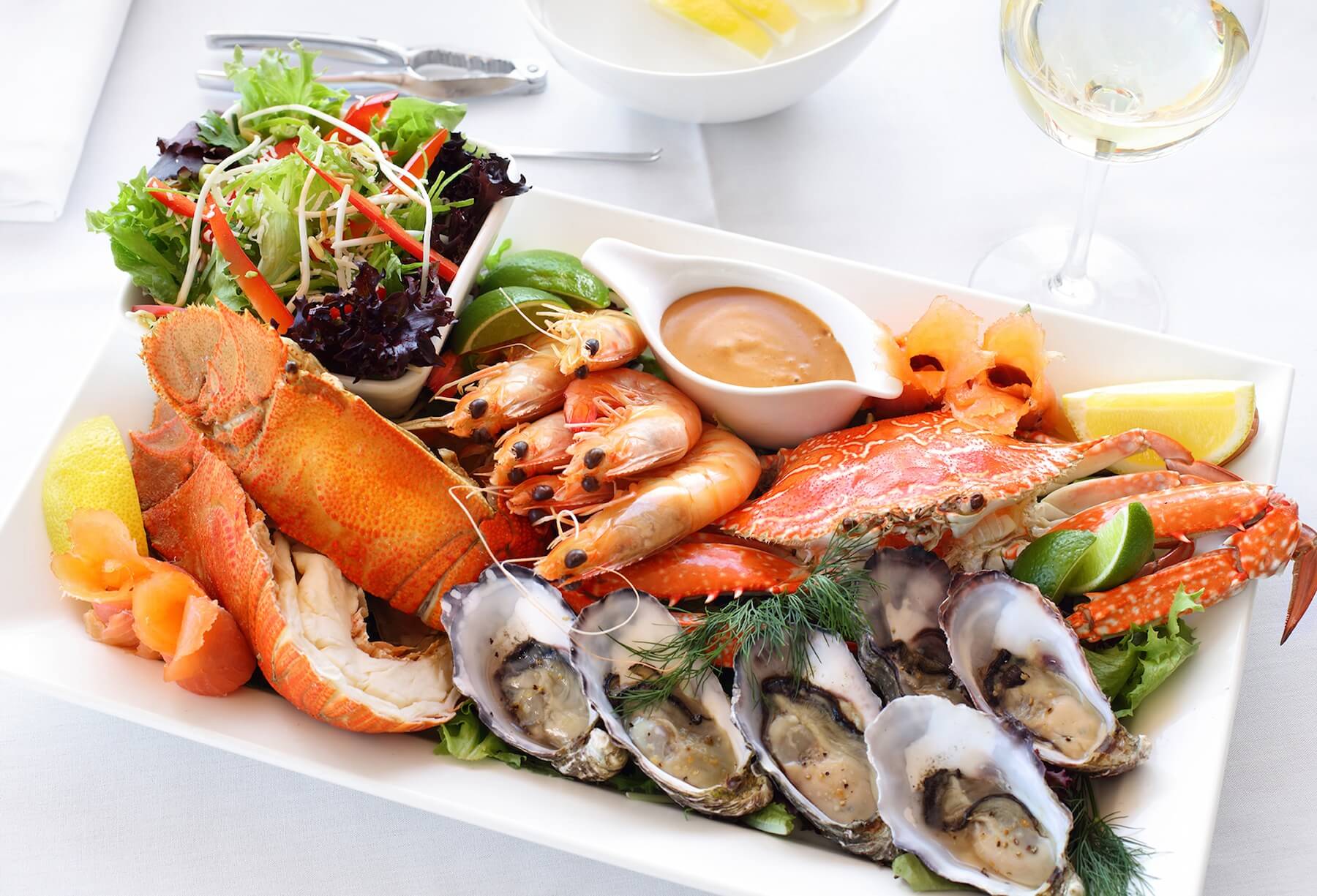SITHCCC013 Prepare seafood dishes
Due to the repetition of many of the elements in the core cookery units we have combined eight (8) units of competency into an 11 chapter learner guide. The units included in this volume are;
- SITHCCC005 – Prepare dishes using basic methods of cookery
- SITHCCC006 – Prepare appetisers and salads
- SITHCCC007 – Prepare stocks, sauces and soups
- SITHCCC008 – Prepare vegetable, fruit, egg and farinaceous dishes
- SITHCCC012 – Prepare poultry dishes
- SITHCCC013 – Prepare seafood dishes
- SITHCCC014 – Prepare meat dishes
- SITHCCC019 – Produce cakes, pastries and breads
Learning outcomes
In this chapter / unit you will learn how to;
- Select and use seafood cookery methods.
- working with frozen seafood safely
- Prepare seafood accompaniments and add sauces as required.
Introduction
Seafood is a very popular item on most restaurant menus and can include a great variety of different fish and crustaceans. It is a delicate ingredient and can very easily be overcooked and ruined. Equally if the fish or shell fish are not cooked long enough food poisoning could occur; so it is important to time the preparation of seafood dishes exactly.
Fish can be categorised as dark and white fleshed and as oily and non-oily so it is also important to understand the differences and the effect this will have on the preparation process as well as the taste of the dish.
Some seafood products are more abundant during certain seasons of the year and your seafood dealer can tell you about seasonal offerings. However, most fish products can be obtained in frozen form all year round.
Selecting Seafood
Seafood can include not only fish but also molluscs and crustaceans. Some seafood products are more abundant during certain seasons of the year and your seafood dealer can tell you about seasonal offerings. However, most fish products can be obtained in frozen form all year round.
It might take several days for ‘fresh’ seafood to make it to your seafood dealer. In some instances, therefore, you might choose to purchase frozen, rather than fresh seafood. Frozen seafood can, in fact, be superior in quality to fresh products. Many fish and shellfish are flash frozen within hours of harvest.
Because seafood is comprised of so many different varieties we will look at some of these including;
- Marine fish
- Marine molluscs
- Marine crustaceans
- Freshwater seafood
(see learner guide)
Selecting Fresh, Quality Products
Seafood products can spoil very quickly and very easily so it is important to know what to look for in fresh produce;
- Fresh whole fish should show evidence of;
- bright and shiny appearance; most of the scales should be intact and adhere tightly to the skin. Each species has characteristic markings and colours which fade and become less pronounced as the fish loses freshness.
- Eyes should be bright, clear, and full and often protrude. As quality deteriorates, the eyes often turn pink/ white and become cloudy and sunken. This does not always apply to small eyed fish such as salmon.
- Gills should be red and free from slime. The colour fades with time to light pink, then grey, and finally greenish or dull brown.
- Odour should be fresh and mild. A fish just out of the water has practically no fish odour. The fishy odour develops with time, but should not be strong or objectionable.
- The flesh should be firm, elastic and spring back when touched and not separating from the bones.
- Fresh fillets and steaks
- Odour should be fresh and mild.
- The flesh should be moist, firm, elastic, and have a fresh cut appearance without traces of browning or drying around the edges.
- Pre-packaged steaks and fillets should be in airtight packaging. There should be little or no air space between the fish and the wrapping material, and no liquid in the package.
- Shellfish – Shellfish spoils quickly and can lose flavour and texture making the meat quite floury or soggy, so use only fresh or quality snap frozen products. As well as being unappetising, stale shellfish can also be the cause of digestive disorders or even food poisoning. Care should therefore be taken that shellfish have not been harvested from polluted waters.
When selecting shellfish, there are several ways to determine freshness: (see learner guide)
For purchase information go back to hospitality unit page
